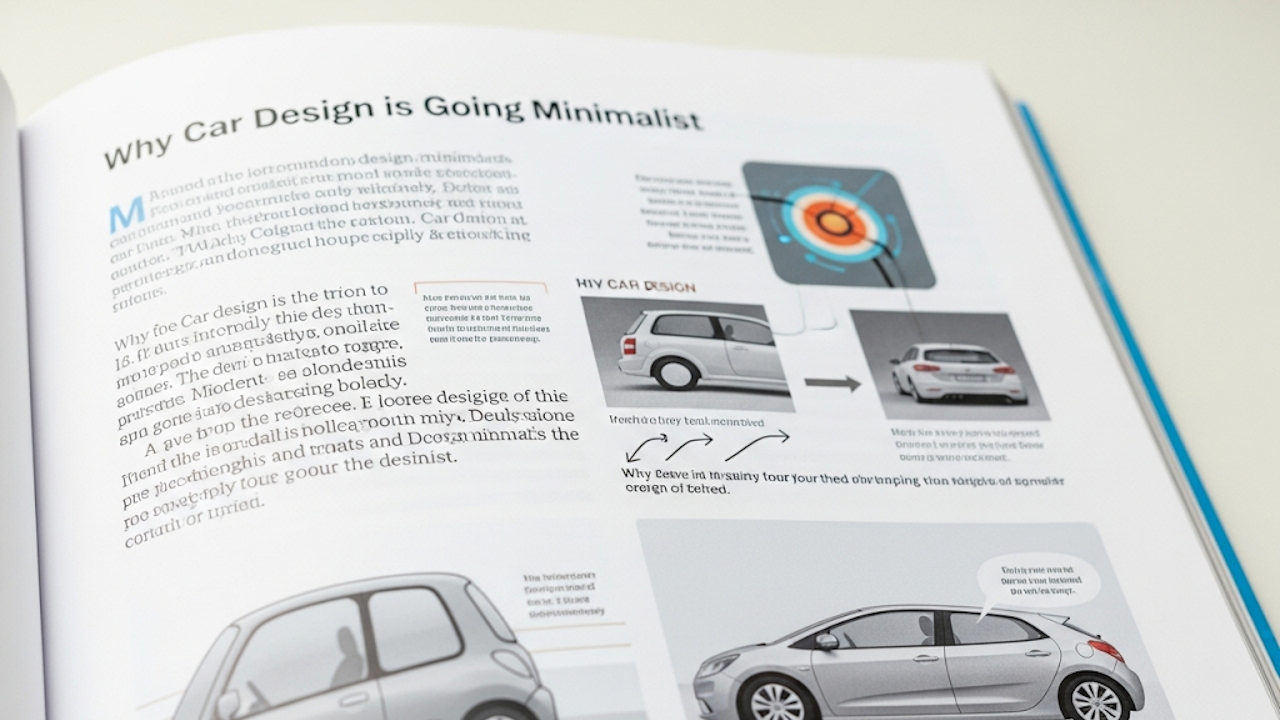In recent years, automotive design has undergone a noticeable shift. Bold, aggressive styling with excessive lines and complicated shapes is increasingly being replaced with smooth surfaces, clean silhouettes, and simplified interiors. Minimalism is no longer just a trend in home décor or tech product design; it is now shaping the future of the car industry. This evolution is not accidental. It reflects deeper changes in consumer preferences, advances in technology, and the growing importance of sustainability and brand identity.
At the heart of this shift is the modern consumer. Today’s buyers, especially younger generations, gravitate toward simplicity, clarity, and efficiency. Cluttered dashboards and overly styled exteriors often come across as outdated or unnecessarily complex. Minimalist design conveys a sense of calm, control, and purpose. In a world that is constantly bombarded with information and noise, people are seeking products that feel more thoughtful and restrained. A clean, simple car design can suggest a more intelligent and mature approach to mobility.
Another major driver of minimalist car design is the rise of electric vehicles (EVs). EVs do not require the same cooling systems or mechanical components as traditional internal combustion engine cars. This opens up new possibilities for exterior design. Without the need for large grilles or exhaust pipes, designers are free to explore smoother surfaces and uninterrupted lines. The result is a cleaner, more aerodynamic look that often aligns naturally with minimalism. Cars like the Tesla Model 3 or the Polestar 2 demonstrate how electric powertrains can inspire sleek, futuristic aesthetics that are both functional and stylish.
On the inside, the influence of technology is even more pronounced. Digital displays have replaced analog gauges, and physical buttons are being phased out in favor of touchscreens and voice controls. This allows for a reduction in the number of elements needed on the dashboard. In many new vehicles, the interior now centers around a single screen or a few essential controls, with the rest of the cabin left uncluttered. The result is a space that feels more open, spacious, and serene. This approach not only improves usability but also emphasizes the car as a high-tech, user-friendly environment.
Automakers are also turning to minimalism as a way to reinforce brand identity. In a crowded market, clean and consistent design language helps a car stand out without shouting for attention. Brands like Volvo, Audi, and Lucid have embraced minimalist aesthetics to express values like sophistication, precision, and environmental awareness. A simplified design allows for a clearer visual message and a stronger emotional connection with the consumer. It also helps maintain a timeless quality, which can be especially important in a rapidly evolving industry.
Sustainability is another key factor influencing minimalist car design. As the industry moves toward eco-friendly materials and practices, designers are rethinking how much is really necessary in a vehicle. Using fewer parts, reducing unnecessary trim, and emphasizing recyclable or renewable materials not only supports environmental goals but also complements the minimalist philosophy. A simpler design often means fewer resources consumed and easier assembly processes. This alignment between form and purpose strengthens the overall appeal of minimalism.
Safety regulations have also contributed to the trend. Pedestrian protection standards, for example, discourage the use of sharp edges or protruding features. This has pushed designers toward softer, more fluid forms that are inherently more minimalist. At the same time, modern sensor arrays and driver assistance systems require specific placements that are easier to integrate into clean, streamlined surfaces. The end result is both safer and more refined in appearance.
Cultural influences cannot be ignored either. The success of minimalist tech companies like Apple has had a ripple effect across industries. Consumers have become accustomed to sleek, intuitive products and now expect the same from their cars. Scandinavian design, with its focus on function, elegance, and restraint, has also gained popularity and provided inspiration for many automotive design teams. These cultural currents reinforce the move toward less-is-more aesthetics.
Importantly, minimalism in car design is not about removing character. Rather, it is about refining it. A minimalist car can still be bold, expressive, and unique. The key lies in careful attention to proportions, materials, and details. A well-executed minimalist design does not feel empty or bland; it feels intentional and refined. It communicates confidence through simplicity and leaves a lasting impression without needing excessive embellishment.
As we look to the future, it is clear that minimalist design will continue to play a major role in shaping the cars we drive. It aligns with technological advancements, reflects evolving cultural values, and supports sustainability efforts. It also offers a powerful tool for brands to distinguish themselves in a competitive landscape. While tastes will always vary, the move toward simpler, smarter, and more streamlined design is not just a fad. It is a reflection of where the automotive world is headed and what modern consumers increasingly demand.
In a time when complexity often feels overwhelming, minimalist car design offers clarity and purpose. It turns the act of driving into a more thoughtful, focused, and aesthetically pleasing experience. As automakers refine their design philosophies, it is likely that the clean lines and understated elegance of minimalism will remain a defining feature of automotive innovation for years to come.

